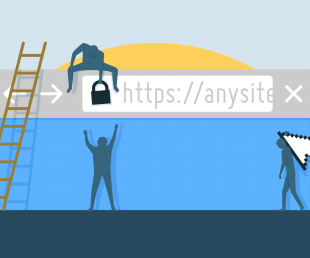Even if you haven’t personally experienced a data breach, there’s a good chance that your personal data might be out there. Luckily, there are a lot of ways you can protect yourself from fraud.
Signing up for a fraud protection service or credit card fraud protection is a great idea, but it has one huge drawback: It only notifies you of fraud after you become a victim. Instead, here are seven great steps to take in advance so that hopefully you’ll prevent fraud in the first place.
1. Consider freezing your credit report
Criminals can easily open new accounts in your name if they have the right information to allow creditors to pull your personal credit report. If you put a credit freeze on your reports, however, creditors can’t access your credit report and the criminal can’t open the account. This is one of the most important fraud protection services at your disposal. Just be sure to unfreeze it when applying for new credit cards or other products that require a credit check.
To place a credit freeze on your account you’ll need to contact each of the three credit bureaus—TransUnion, Experian and yes, Equifax—individually. There may be a small fee to place and lift the credit freeze depending on which state you live in.
You’ll receive information from each bureau about how to lift the freeze if and when you intend to apply for credit yourself or permanently want to remove the freeze. Don’t lose it—it’s your key to your own credit report!
2. Use top-quality security software
We’re well past the days of simple computer viruses now, and so it isn’t enough just to have a basic antivirus installed on your computer for help in preventing fraud. Hackers today have all kinds of tricks and tools up their sleeves to get your information, such as phishing schemes, spyware and even ransomware.
Instead, look for full-security packages that include antivirus, firewall and protection against the schemes mentioned above, at a minimum. Bitdefender and Norton offer great solutions.
Make sure to install any security programs and password managers on your smartphone and other connected devices as well.
3. File your tax returns ASAP
Unfortunately, the IRS doesn’t always catch criminals trying to file tax returns in your name. That leaves an opportunity for anyone with your social security number to submit a tax return with their own mailing address.
This year make sure to get your tax return in as early as possible to edge out potential fraudsters filing—and collecting—in your name.
4. Pick up your mail promptly
It’s easier than you might think for people to steal your mail and get your personal information, especially if you have your mail delivered to an unlocked mailbox.
You can guard against this threat by picking up your mail every day. An even better option is to invest in a USPS-approved locking mailbox.
5. Shred documents with personal information
You might think that putting your sensitive documents in with the day’s stinky trash would deter people, but you’d be wrong. And what’s worse, those documents can stick around for several months or more in a landfill before they become unreadable.
Instead of leaving a trail of breadcrumbs for potential identity thieves, take a simple step and shred your documents with any personal information on them. There are many affordable paper shredders on the market. If you don’t have one, there are a number of secure drop-off locations for shredding at banks, UPS and FedEx stores and other businesses. Many cities and towns also offer annual “shredding days” where you can get all your shredding done once per year.
6. Watch for credit card skimmers
Credit card skimmers are one of the top ways people get your credit card information. These crafty devices are designed to be stuck right on to credit-card swiping devices such as gas pumps and ATM machines, or even overlaid right on the PIN pad. As you insert your card to make a payment or enter your PIN number, the skimmer can also read and store your credit card information. Then, the criminal swings by later to pick up the device and download your data.
While they won’t be able to steal your entire identity from this per se, it’s a hassle to deal with at best and a potentially huge liability at worst.
It can be tough to spot these devices, but if you look closely at any credit-card swiping device and the PIN pad, you might be able to identify them. Look for different colors or types of plastic. If any plastic pieces stick out, try wiggling them. If anything looks off, don’t use the machine, and call the police. You can also make sure that you’re using a chip card (if you don’t have one, ask your bank for one) because these are more secure than the old-school magnetic stripe cards. Make sure to regularly check your account balance as well so that if you do become a victim of fraud, you can report it quickly.
Safeguarding yourself, your information and preventing fraud will take a little bit of time and effort on your part. But, compared to the alternative of dealing with fraud after you become a victim, it’s a walk in the park.



